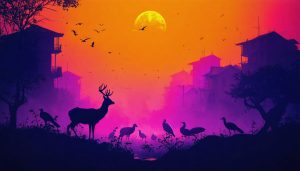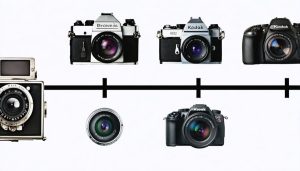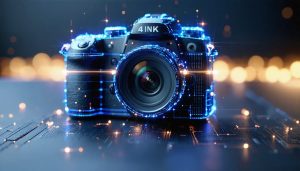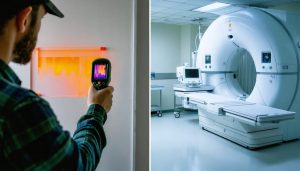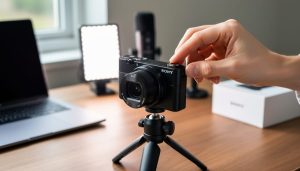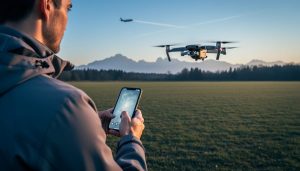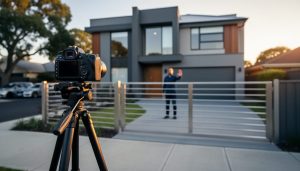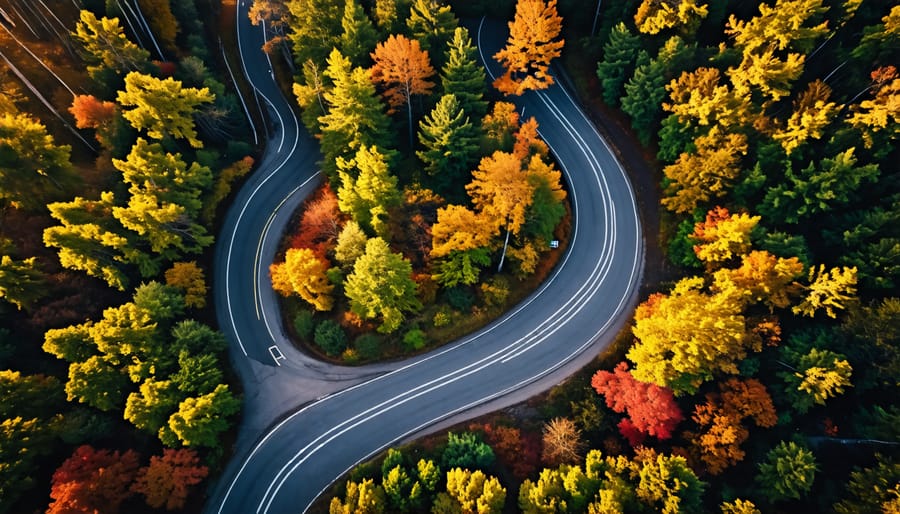
Elevate your aerial photography with these drone composition techniques:
Master the art of composition by applying the rule of thirds, leading lines, and symmetry to your drone shots. Imagine a 3×3 grid over your frame and place key elements along the lines or at their intersections.
Seek out unique perspectives only possible with camera drones, like top-down views, low-altitude angles showcasing foreground elements against epic landscapes, or flying through narrow gaps for immersive “tiny planet” shots.
Vary your altitude for diverse compositions – go high for grand overviews that compress distance and reveal patterns, or fly low for intimate, relatable scenes with a strong sense of place.
Include a clear focal point to anchor your compositions, whether it’s a lone tree, winding road, or vivid pop of color amidst muted surroundings. Compose with intention, guiding the viewer’s eye through the frame.
Rule of Thirds
The rule of thirds is a classic composition guideline that can instantly elevate your drone photography. Imagine your frame divided into a 3×3 grid. Aligning key elements of your scene along these lines or at their intersections creates a balanced, pleasing composition that draws the viewer’s eye naturally through the image.
When shooting with your drone, try placing the horizon along the top or bottom third rather than straight across the middle. This adds visual interest and avoids a static, split-screen effect. For landscapes, position a striking feature like a lone tree, rocky outcrop, or building at one of the intersections to create a strong focal point.
The same principles apply to more abstract aerial compositions. Look for patterns, textures, and shapes that can be framed off-center for a more dynamic shot. A winding river, meandering road, or geometric crop fields can lead the eye when positioned along a third-line.
While the rule of thirds is a tried-and-true technique, feel free to experiment and break the rules intentionally for creative effect. Center-composed shots can work well for symmetrical subjects or to emphasize patterns. The key is to make conscious choices about placement rather than defaulting to a bulls-eye composition.
As with all drone photography, consider the direction of light, time of day, and weather conditions to get the most compelling results. Combine the rule of thirds with great lighting and thoughtful flying, and you’ll be well on your way to creating stunning, impactful aerial images that stand out from the crowd.
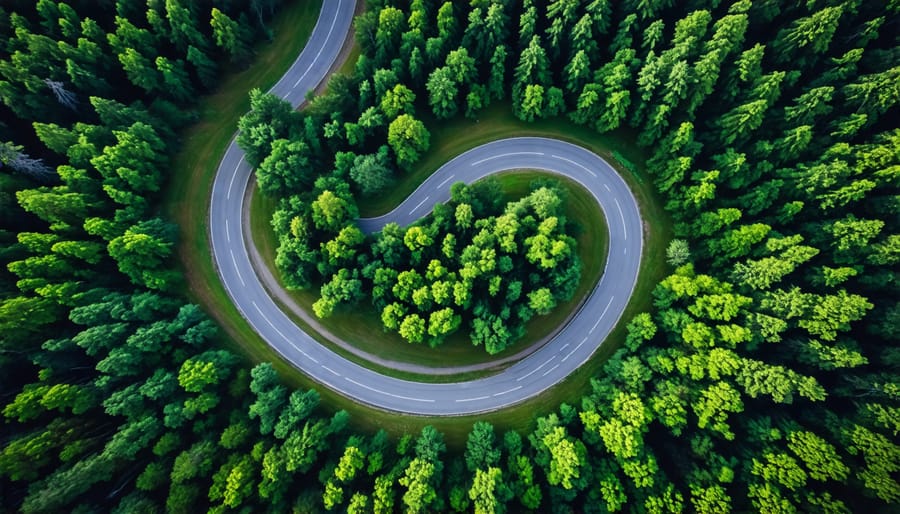
Leading Lines
Leading lines are a powerful compositional tool in drone photography that can guide the viewer’s eye through the frame and create a sense of depth and movement. Roads, rivers, fences, and other linear elements serve as natural pathways, drawing attention to key focal points or leading the gaze towards the horizon.
When scouting for leading lines, look for strong, well-defined elements that cut through the landscape. A winding road snaking through rolling hills, a meandering river carving its way across a valley, or a weathered wooden fence stretching into the distance all make excellent subjects. Position your drone to emphasize the line’s direction and flow, often starting from a corner of the frame.
Experiment with different heights and angles to accentuate the leading line’s impact. A low, oblique perspective can add drama and highlight the line’s path, while a high overhead shot can reveal intricate patterns and textures. Play with symmetry and asymmetry, using the line to bisect the frame or create an off-center balance.
Consider how leading lines interact with other elements in the scene, such as shadows, textures, and colors. A road cutting through a field of vibrant wildflowers or a river reflecting the golden hues of sunset can add visual interest and depth. Use the line to connect foreground and background elements, creating a cohesive composition that guides the eye seamlessly through the image.
When incorporating leading lines, be mindful of where they lead. Aim to direct the viewer’s gaze towards a compelling subject or a strong point of interest, rather than leading them out of the frame. A road disappearing into a mountain range, a river winding towards a distant cityscape, or a fence leading to a lone tree can all provide satisfying visual journeys and a sense of destination.
By thoughtfully integrating leading lines into your drone compositions, you can create dynamic, engaging images that invite the viewer to explore the scene and discover the story within. Embrace the power of these linear elements to elevate your aerial photography and craft captivating visual narratives from above.
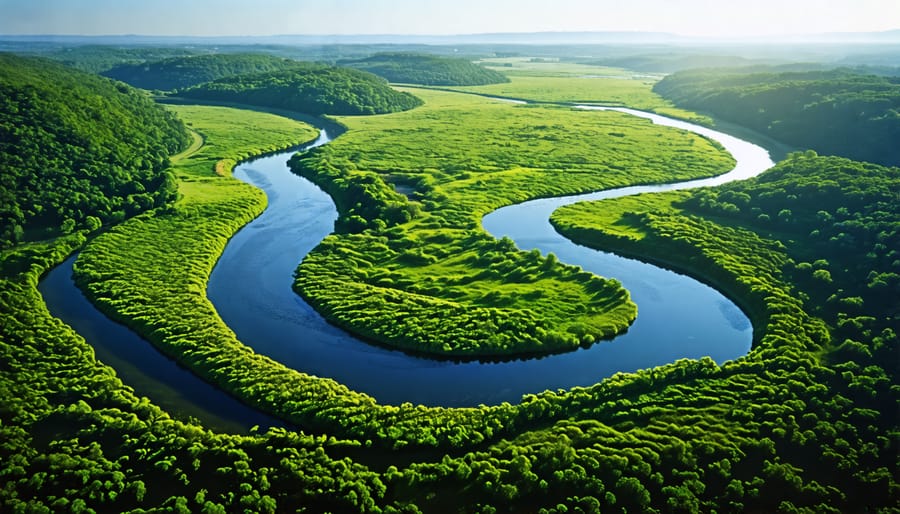
Symmetry and Patterns
One of the most powerful aspects of drone photography is the ability to capture striking symmetrical compositions and mesmerizing patterns from a bird’s-eye view. By rising above the scene, you can discover a whole new world of visual elements that may not be apparent from ground level.
To create captivating symmetric compositions, look for subjects that naturally lend themselves to symmetry, such as reflections in still water, architectural features, or even rows of crops in a field. Position your drone directly above the center point of the scene and adjust your altitude until the composition feels balanced and harmonious. Experiment with different heights to see how the perspective changes and impacts the overall symmetry.
Patterns are another fascinating aspect of aerial photography. From the intricate lines of a bustling city grid to the swirling shapes of a natural landscape, the aerial view reveals captivating repetitions and textures. When photographing patterns, pay attention to the interplay of light and shadow, as this can add depth and dimension to your images. Consider shooting at different times of day to see how the changing light affects the patterns below.
Leading lines can also be used to great effect in aerial pattern photography. Look for elements like roads, rivers, or rows of trees that guide the viewer’s eye through the frame and create a sense of movement within the static image. By combining leading lines with symmetry and patterns, you can craft truly stunning compositions that showcase the unique perspective of drone photography.
As you explore the world of aerial symmetry and patterns, don’t be afraid to think creatively and push the boundaries of traditional composition techniques. The sky’s the limit when it comes to capturing the beauty and intrigue of the world from above.
Framing
When framing your aerial shots, look for elements in the scene that can naturally draw the viewer’s eye toward your main subject. Trees, mountains, rivers, roads, or even the horizon line itself can serve as leading lines guiding attention to the focal point. Man-made structures like bridges, fences, or buildings can also act as framing devices when strategically positioned.
Shooting through natural frames like rock arches, overhanging branches, or gaps between buildings creates a window effect that adds depth and context to the image. Experiment with flying your drone lower to capture foreground elements that frame the background, or higher for a bird’s-eye view that uses the landscape itself to contain your subject.
When framing people or animals, consider their positioning relative to the environment. Place your subject off-center according to the rule of thirds, perhaps at the convergence of natural leading lines, and balance the composition with interesting background elements. Avoid placing the horizon line directly through the middle of the frame, which can appear static. Instead, position it in the top or bottom third, depending on whether the sky or landscape is more engaging.
Play with scale and perspective by framing smaller subjects against vast landscapes or by filling the frame with a single striking detail. Layering elements from foreground to background creates a sense of immersion and three-dimensionality that pulls the viewer into the scene. Always keep the main subject clearly visible and unobstructed by framing components, ensuring that it remains the undisputed star of your composition. With creative framing, even simple scenes can be transformed into captivating aerial works of art.
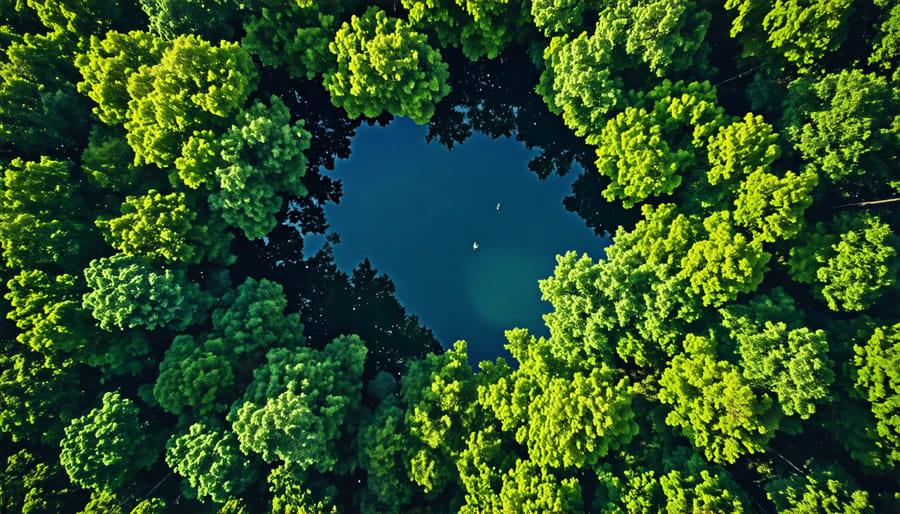
High Key and Low Key
High key and low key compositions are powerful techniques that can be used to create striking and emotive drone images. High key involves bright, evenly lit scenes with minimal shadows and a predominance of white or light tones. This style often conveys a sense of airiness, optimism, or simplicity. When shooting high key with a drone, look for scenes with uniform lighting conditions such as a beach on an overcast day or a snowy landscape. Adjust your drone’s exposure settings to slightly overexpose the image, ensuring that highlights are bright but not blown out.
On the other hand, low key compositions are characterized by dramatic lighting, deep shadows, and a dominance of dark tones. This style is often used to create a sense of mystery, moodiness, or drama. When shooting low key with a drone, seek out scenes with strong directional light, such as the golden hour just before sunset or sunrise. Position your drone to capture long shadows and illuminate your main subject from the side or back to create a sense of depth and contrast. Adjust your exposure to underexpose the image slightly, preserving detail in the highlights while allowing shadows to fall into deep darkness.
Both high key and low key compositions can be enhanced by carefully choosing your shooting angle and framing. Experiment with different heights, angles, and distances to find the most compelling composition. Remember, the unique perspective offered by drones allows you to capture familiar scenes in new and interesting ways, so don’t be afraid to get creative with your high and low key aerial shots.
Scale and Perspective
Drone photography opens up a world of creative possibilities when it comes to scale and perspective. By adjusting your drone’s altitude and angle, you can capture scenes from vantage points that would be impossible with traditional photography. One powerful technique is the bird’s-eye view, which involves shooting directly downward from a high altitude. This perspective flattens the scene, creating striking patterns and geometries that highlight the relationships between elements on the ground.
High angle shots, taken from a slightly lower altitude and at an oblique angle, offer another way to play with scale. By positioning your drone above your subject, you can emphasize its size relative to its surroundings. This technique works particularly well for showcasing expansive landscapes or architectural features.
When experimenting with these perspectives, it’s essential to keep your drone stable to avoid blurry or distorted images. Holding your camera steady is crucial, even when you’re not physically behind the lens. Invest in a quality gimbal and practice smooth, controlled movements to ensure sharp, professional-looking results.
As you explore different heights and angles, pay attention to how the position of the sun and shadows impacts your compositions. The interplay of light and shadow can add depth and drama to your images, particularly when shooting during the golden hours around sunrise and sunset. With a bit of creativity and experimentation, you’ll discover endless ways to use scale and perspective to create stunning, one-of-a-kind drone photographs.
Subject Placement
When it comes to creating stunning drone photos, strategic subject placement is key. One powerful technique is center composition, where you place your main subject directly in the middle of the frame. This works especially well for symmetrical scenes or when you want to emphasize a specific focal point. For example, centering a lone tree in a vast field can create a striking, minimalist image.
Another important concept is the rule of space, which involves giving your subject room to “breathe” within the frame. If you’re photographing a moving subject like a car or a person, leave more space in front of them to create a sense of direction and movement. This negative space can also help to convey a feeling of scale and grandeur in your aerial shots.
When you’re flying your drone, take the time to carefully compose your shots. Experiment with different angles and heights to find the most impactful perspective. A bird’s-eye view can reveal fascinating patterns and textures, while a lower angle can help to create a sense of depth and dimensionality.
Remember, the beauty of drone photography lies in its ability to capture familiar scenes from a fresh, unexpected vantage point. By thoughtfully placing your subjects within the frame and leveraging techniques like center composition and the rule of space, you can create truly unforgettable images that showcase the world from a whole new perspective. So get out there, explore, and let your creativity soar!
In conclusion, mastering drone photography composition takes practice, experimentation, and a willingness to try new techniques. By applying the principles we’ve covered, such as the rule of thirds, leading lines, symmetry, patterns, and bird’s-eye view, you can elevate your aerial images to new heights. Remember to always keep your subject in mind and look for unique perspectives that showcase your location in a compelling way. Don’t be afraid to break the rules occasionally and let your creativity soar. With time and experience, you’ll develop your own signature style and create stunning aerial photographs that captivate your audience. As you continue your journey, don’t forget the importance of post-processing in refining your images and bringing your vision to life. Now, go out there, launch your drone, and capture the world from a whole new perspective!

